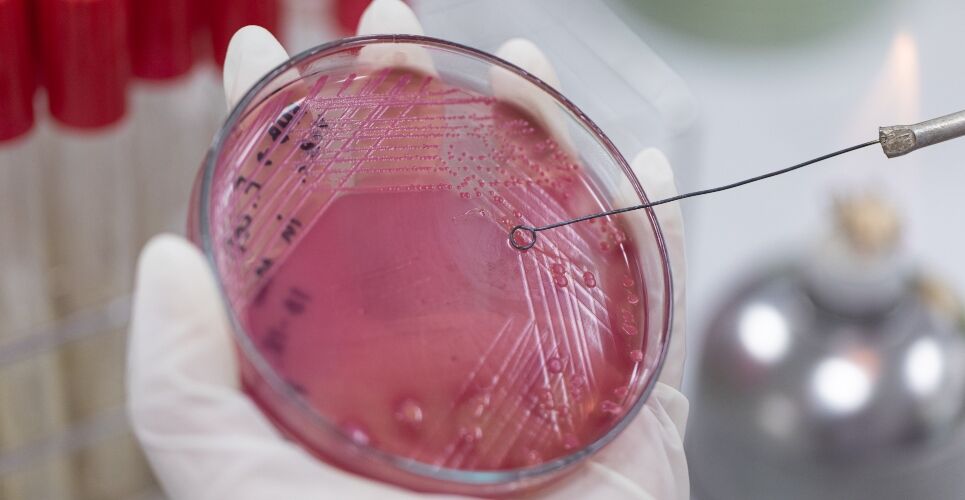A novel membrane efflux pump inhibitor has been developed by a team of researchers at King’s College London, providing hope in the fight against antimicrobial resistance.
Bacteria can become resistant to antibiotics by drawing on their efflux pumps – proteins which allow them to regulate their internal environment by removing toxic substances. These reduce the concentration of antibiotics that reach the inside of the cell, increasing the likelihood of treatment failure.
King’s College London chemists have discovered how an efflux pump inhibitor can prevent this mechanism and therefore stop bacteria from becoming resistant to currently used antibiotics. This new method could prove cheaper and more efficient at dealing with antimicrobial resistance.
Efflux pump inhibitor mechanism
In 2017, researchers identified NSC 60339 as a periplasmic adaptor protein (AcrA) inhibitor with diverse functions, however the mechanism of AcrA inhibition was unclear.
In the current study, researchers used a combination of native and hydrogen/deuterium exchange mass spectrometry, molecular dynamics simulations and biophysical and cellular efflux assays to determine a mechanism of action for the AcrA inhibitor NSC 60339.
Their findings suggest that NSC 60339 becomes wedged between the lipoyl and αβ barrel domains, significantly restricting the structural dynamics of AcrA. They suspect that once locked in this position, AcrA cannot perform the necessary conformational transitions required during the functional rotation of the AcrAB-TolC pump used by bacteria to eject an antibiotic.
Ultimately, the work provides molecular insights into multi-drug adaptor protein function, which could be valuable for developing antimicrobial therapeutics.
Benjamin Russell Lewis from the Department of Chemistry at King’s College London said: ‘We discovered an inhibitor that acts as a ‘molecular wedge’ to neutralise the effective movement of the protein controlling the efflux pump response. Previous studies have identified that this particular inhibitor helped antibiotics kill bacteria but no one knew why or how, until now.
‘Traditional methods have focused on inhibitors targeting proteins in the inner cell membrane of bacteria. We demonstrate that inhibitors targeting the area between the inner and outer cell membranes could work better.‘
Dr Eamonn Reading, research fellow, Department of Chemistry at King’s College London, added: ‘Bacterial multidrug resistance continues to spread at alarming rates, threatening human health globally. If there ever is going to be a quick solution to dealing with something like a pandemic, employing efflux pump inhibitors will help us re-tool the existing treatments we already have.
‘We’ve helped lay the foundations with which future researchers and drug manufacturers can make more impactful alternative therapeutics to treat these devastating diseases without the need to make brand new antibiotics.‘
By providing the groundwork for how these cells and proteins interact at a molecular level, it is hoped that pharmacologists will be able to produce this new class of inhibitors and antibiotic treatments at speed and in time for the next generation of superbugs.

